Just as tiny rays of sunlight trail the sky and the fainter stars begin to fade in dawn light, we arrived at the coastal community of Brgy Diora-Zinungan in Sta. Ana, Cagayan. The method behind our madness of waking up early was to time our visit when beltfish, locally referred to as "espada" or "bulung unas", hunt for food in the deep waters of the Philippine Sea in schools.
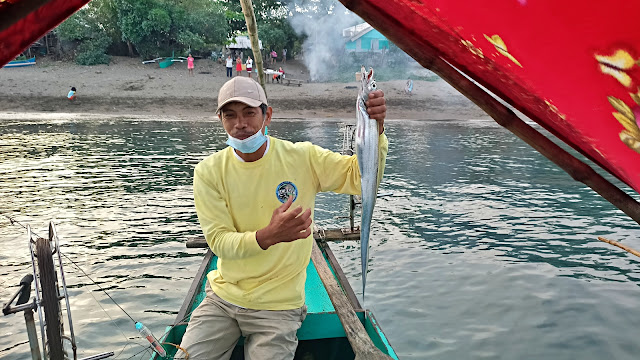 |
| An espada fish is also used as bait. You can make at least 8 baits from a beltfish this size |
As we met with the fishermen, we were invited to gather for a brief orientation about what we are about to experience that day. Since beltfishing is the main source of livelihood for the residents, the Department of Tourism Region 2 included it in their newly-laid out "Nature and Adventure" tourism circuit.
 |
| Running a bit late since the beltfish likes to swim with either under darkness or minimal sunlight |
We learned from Kuya Wilfredo, the group's lead tour guide, that beltfishing began in Diora-Zinungan in the early 2000s when a fellow fisherman came home with 80 kilos of beltfish catch after venturing more than 20 nautical miles.
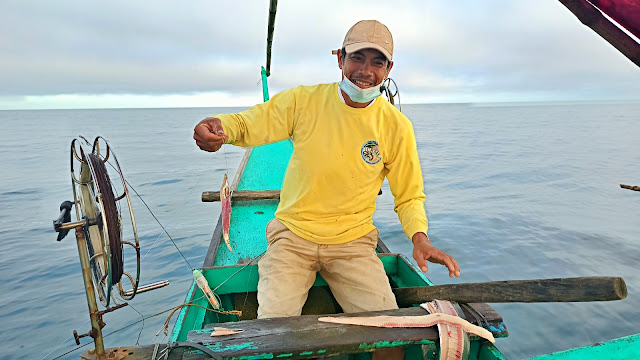 |
| Attaching the baits which are meat from an Espada fish. |
In the years since then, they came to understand the beltfish's nature and instincts well enough to realize that they feed during long periods between dusk and dawn. They also pinpointed that beltfishes usually swim at an average depth of 80 fathoms, which is approximately 140 meters.
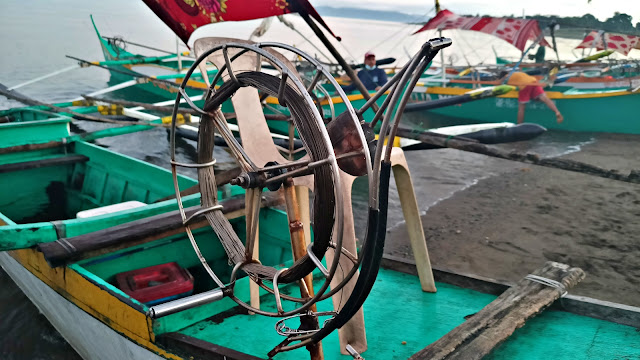 |
| The Kariti, a manual pulley used to lower the baits to around 80-100 feet deep |
Using the "Kariti" — a manual and cheaper version of the hydraulic pulleys used by the Taiwanese — the fishermen tie three thin cables with baits to each of the boat's three kariti and then set out on a 12-nautical mile area of fishing grounds. More fluent in Ilocano, Kuya Wilfredo manages to converse with us in Tagalog and narrated how they initially built a Kariti using the crank of a bicycle. "After numerous trials and re-designs, we finally came up with this Kariti design which we have been using for ten years now", he adds.
Setting
out for the Catch
Split into threes, we boarded separate fishing boats, each manned by a pair of highly skilled fishermen, and set out for the ideal fishing grounds for "espada" fish, about 2-4 nautical miles off the coast of Diora-Zinungan. Fortunately for our group, one of our guides was Kuya Wilfredo who continued his lecture about the process of beltfishing as well as the personality traits of the “bulung unas”.
 |
| A blinking small lamp is also lowered with the baits |
"The beltfish is different from other fish species because it will only pull the bait downward when hooked. This enables us to use three baits in one kariti because the cables won't get entangled if we simultaneously capture three of them" Kuya Wilfredo explained to us in Tagalog.
 |
| Each Kariti can hold three cables with baits. Making it possible to catch three "espadas" in one drop |
When we arrived on the area fishing ground, we started hearing cheers from the other boats as they started catching several beltfishes. One boat even caught a total of 12 beltfishes. Since our boat was the last to arrive after escorting another boat that experienced engine problems, we couldn’t catch a single one since the sun was already up.
A
Community-run Experiential Nature Tour
Beltfishing has sustained the community of Diora-Zinungan for decades but concerns about its sustainability remains. "Before, any fishermen could easily catch 60-80 kilos a day", Kuya Wilfredo told us in Tagalog. "You'll be the one to give up and call it a day. Nowadays, it's a miracle to get 30 kilos every day", he continues.
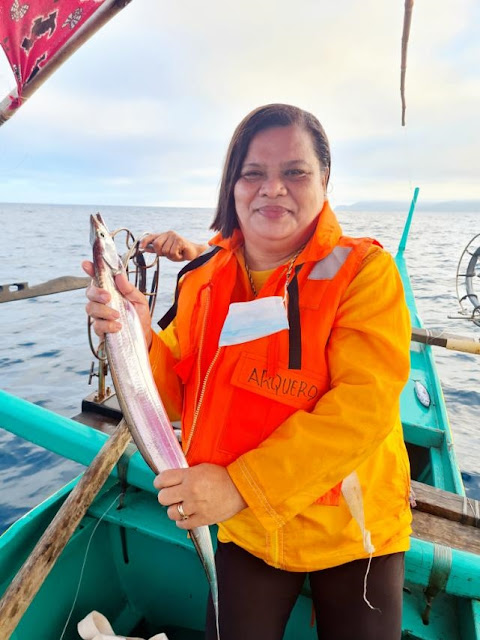 |
| Mam Jane Salabit of DOT holds one of their catch |
In light of the fact that fresh catch is diminishing in coastal areas that depend on fishing, having another source of income provides an attractive alternative for local fishermen. In this case, a community-run tourism business provides a viable substitute.
 |
| Not bad for an hour and a half's fishing experience. A catch from one of the boats |
By offering an experiential beltfishing tour, the fishermen won't have to catch 30 kilos of fish to earn a living. They can guide tourists to catch a few beltfishes and viola, they can earn easily match or even surpass their regular income.
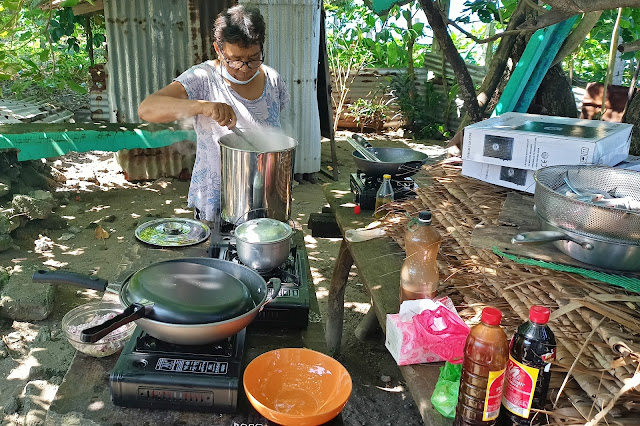 |
| One of the community mothers, starts preparing our espada fish lunch |
A second advantage of this program is that it will give the beltfish population time to grow as fishing volume will be reduced by a significant amount. The Department of Tourism Region II plan to market this experiential tour combined with a beachfront lunch consisting of their beltfish catch.
 |
| Fried, Grilled and Sinigang na Espada. |
For each tour's total catch, a third can be allocated to be prepared and cooked by the community mothers who are part of DOT's "Kulinarya" program, while the other two thirds can be bought from the fishermen and distributed among the community.
 |
| Group Lunch with DOT, DOT Region II, Cagayan Tourism and other Tour Operators |
This set-up is a win-win scenario for everyone. First, beltfishes will be able to repopulate, second, tourists will get to experience something unique and lastly, the fishermen will earn from their tour-guiding job while the community also benefits from other tourism-related services.
 |
| The jump-off to the beltfishing experience is still undeveloped but there are plans to build a small visitor's receiving and orientation area and a place to have lunch in the near future |
As this program is still in its infancy stages, visitors wishing to experience beltfishing should contact the Department of Tourism Region II to be connected with a tour operator who will coordinate with the community.






















